This week’s parshah recounts the episode of the “nechash hanechoshes,” the copper snake erected by Moshe. As a reaction to their unwarranted complaining, Hashem dispatched a horde of “nechashim haserafim,” fiery serpents, which terrorized the nation. They appealed in desperation to Moshe, who turned to Hashem for guidance. Hashem then issued these instructions: עֲשֵֹה לְךָ שָֹרָף וְשִֹים אֹתוֹ עַל־נֵס וְהָיָה כָּל־הַנָּשׁוּךְ וְרָאָה אֹתוֹ וָחָי – “Make for you (an image of) a fiery serpent and place it upon a pole; anyone who is bitten shall look at it and live” (Bamidbar 21:8). Moshe did just that, fashioning and erecting the nechash hanechoshes. The desired effect was achieved: וְהָיָה אִם־נָשַׁךְ הַנָּחָשׁ אֶת־אִישׁ וְהִבִּיט אֶל־נְחַשׁ הַנְּחשֶׁת וָחָי – “And it was, if a snake would bite a person, he would gaze at the copper snake and live” (ibid. v. 9).
Unleashed
What exactly was the nature of these creatures? Why are they referred to as “fiery,” and where did they come from in the first place?
The Rabbeinu Bechaye provides some enlightening details on this subject. Their “fiery” quality, he explains, alludes to the burning venom they injected into their hapless victims. But this is not the only reason they are known by such a noteworthy title. As we shall see, there is actually a dual connotation to the term “seraphim.”
In fact, the Rabbeinu Bechaye contends, these serpents did not simply “show up” for the occasion; they had actually already been present in the midbar (desert) throughout B’nei Yisrael’s forty-year sojourn. Elsewhere, the Torah characterizes the location as one infested with such pernicious creatures, referring to the wilderness as מִדְבָּר הַגָּדֹל וְהַנּוֹרָא נָחָשׁ שָֹרָף וְעַקְרָב – “The great and terrible wilderness, (populated by) snakes, fiery serpents, and scorpions” (Devarim 8:15). However, until this point, Yisrael enjoyed the protection Hashem provided in the form of the accompanying ananim (clouds), which surrounded the people on all sides. The Medrash (Mechilta, parshas Beshalach) relates that there was one cloud that traveled before the nation and was singularly devoted to dispatching these serpentine creatures before they could inflict any harm. But now, in response to the sin of complaining, the protection was revoked – and the snakes were unleashed.
The Rabbeinu Bechaye makes a noteworthy observation regarding the title conferred on these creatures. While we pronounce the term hanechashim haserafim, the actual vowelization, of course, does not appear in the Sefer Torah. Rather, the word appears simply as השרפים – which leaves open the option of varying pronunciations, depending on which vowels one inserts. Thus, the Rabbeinu Bechaye states that the term, in effect, can be read in two ways, reflecting different aspects of “burning.” It could be read as “hanechashim haserufim,” meaning, “the burnt serpents.” This would refer to the method whereby the cloud had contained these pests until this point – i.e., by burning them. But now, as agents of retribution, they became “hanechashim hasorfim – the serpents who would burn,” a reference to the burning venom they injected into their victims.
It Depends How You Look at It
In his sefer Ta’am V’da’as, R’ Moshe Sternbuch also elaborates on the “saraf” aspect, focusing specifically on the image Moshe was commanded to fashion. He notes as well that Moshe was not told to erect a “nachash” (snake); instead, Hashem employed the “fiery” term: עֲשֵֹה לְךָ שָֹרָף וְשִֹים אֹתוֹ עַל־נֵס וְהָיָה כָּל־הַנָּשׁוּךְ וְרָאָה אֹתוֹ וָחָי – “Make for you (an image of) a fiery serpent and place it upon a pole; anyone who is bitten shall look at it and live.”
The significance of this shift can be gleaned by examining Chazal’s teaching on the matter, which they relate in the well-known Mishnah in Rosh Hashanah (3:8):
וְכִי נָחָשׁ מֵמִית, אוֹ נָחָשׁ מְחַיֶּה. אֶלָּא, בִּזְמַן שֶׁיִּשְׂרָאֵל מִסְתַּכְּלִין כְּלַפֵּי מַעְלָה וּמְשַׁעְבְּדִין אֶת לִבָּם לַאֲבִיהֶן שֶׁבַּשָּׁמַיִם, הָיוּ מִתְרַפְּאִים, וְאִם לָאו, הָיוּ נִמּוֹקִים.
“Can a snake (really) bring about death or life? Rather (it was the following force at work here): When Yisrael would direct their gaze upward and subjugate their hearts to their Father in Heaven, they would become healed. If (they would) not (do so), they would pine away.”
Now, the assertion the Mishnah initially makes is quite noteworthy. The conventional understanding of this episode is that the copper snake, erected in response to Yisrael’s pleas for help, provided a remedy for their ailment: “Anyone who is bitten shall look at it and live.” The Mishnah clarifies that, of course, it was Heaven’s doing at the root of this phenomenon, as the actual salvation would be effected through the purity of one’s heart and devotion. But in the course of providing this clarification, the Mishnah seems to imply that there were those who upon gazing at this fixture would merit life, while others who would do so would actually incur harm! The Mishnah does not simply query, “Can a snake really cause life?” but rather entertains both possibilities: “Can a snake (really) bring about death or life?” The insinuation, then, is that there were such people who would look upon the image… and perish as a result! The Mishnah does proceed to clarify that the root cause was actually determined by the individual’s kavanah (intention); nonetheless, the fact remains that, indeed, it was possible for a person (lacking the proper kavanah) to incur death just by gazing at the snake.
It is for this reason, explains R’ Sternbuch, that the Torah purposefully employs the term “saraf,” with its connotation of “fire.” For such is the nature of fire, as well; its results depend on how it is utilized. Fire can be an agent to purify and refine; it can improve a dish through cooking. Alternatively, however, it can be used for the exact opposite purpose – that is, to damage or destroy. It is for this reason the Torah selected here the title of “saraf”; by conjuring up the image of fire, it reflects the dual-nature of this item – as a purveyor of either life or death, depending on the purity of one’s heart.







